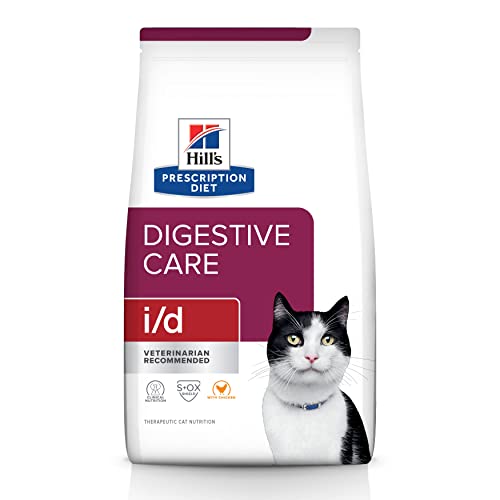Cats have been considered one of the most beloved pets around the world, and it's not hard to see why. Their cute and fluffy appearance, playful demeanor, and independent nature have captured the hearts of millions of people worldwide. However, did you know that cats can also help improve your mental health?
It's true! Feline companionship has been proven to have therapeutic benefits that can help enhance mental health. In this article, we will explore the various ways cats can contribute to our mental wellbeing.
First and foremost, cats are great stress-relievers. Studies have shown that playing with or petting a cat can lower your blood pressure and reduce anxiety levels. Their soft fur and soothing purrs have a calming effect that can ease the mind and relax the body. The act of caring for a cat can also give a sense of purpose and responsibility, which can be particularly beneficial for individuals with mental health disorders.
Cats can also help alleviate feelings of loneliness and isolation. According to a study conducted by the Human-Animal Bond Research Institute, interacting with cats can improve social support and decrease loneliness in older adults. Having a furry companion to talk to and care for can provide a sense of companionship and reduce feelings of isolation, which can be especially important for individuals who live alone or have limited social interactions.
Furthermore, cats can help individuals with depression. A study published in the Journal of Psychiatric Research found that individuals who owned cats were less likely to report symptoms of depression than those who didn't own pets. The study also found that cat owners had lower levels of cortisol, a stress hormone that can contribute to depression symptoms. Having a cat can provide a sense of comfort and security, which can help individuals feel less lonely and improve their mood.
Cats can also provide a sense of routine and structure, which can be beneficial for individuals with mental health disorders such as anxiety and ADHD. Feeding, grooming, and playing with a cat can create a daily routine that can help individuals feel more organized and in control. Additionally, having a routine can provide a sense of predictability, which can help reduce anxiety levels.
Another benefit of feline companionship is that it can improve physical health, which can have a positive impact on mental health. According to the Centers for Disease Control and Prevention, owning a pet can help lower blood pressure, reduce cholesterol levels, and decrease the risk of heart disease. These physical health benefits can contribute to overall wellbeing and help individuals feel better mentally as well.
Cats can provide numerous therapeutic benefits that can help enhance mental health. Whether it's lowering stress levels, reducing feelings of loneliness, alleviating depression symptoms, providing a sense of routine, or improving physical health, cats have something to offer everyone. If you're considering getting a pet, a furry feline companion may be just what you need to improve your mental wellbeing.
The Historical Connection between Cats and Humans
Throughout history, cats have held a captivating allure for humans, intertwining their lives with ours in myriad ways. From the ancient civilizations of Egypt to the medieval streets of Europe, cats have been revered, worshipped, and cherished as both companions and protectors.
In ancient Egypt, cats were elevated to the status of divine beings, with the goddess Bastet often depicted with the head of a lioness or a domestic cat. Egyptians believed that cats possessed magical powers and offered protection against evil spirits and vermin. Cats were so highly esteemed that harming one was punishable by death, and they were often mummified and buried alongside their human counterparts.
In medieval Europe, cats were associated with folklore and superstition, sometimes revered as symbols of luck and good fortune, while at other times demonized as witches' familiars. Despite periods of persecution during the Middle Ages, cats gradually regained favor as valued companions and skilled hunters, earning their place in households and aboard ships as rodent control experts.
The historical relationship between cats and humans is rich and complex, spanning cultures and civilizations. From their role as sacred guardians in ancient Egypt to their status as beloved pets in modern times, cats have woven themselves into the fabric of human society, leaving an indelible mark on our collective consciousness. This enduring connection serves as a testament to the profound bond between humans and felines, a bond that continues to shape and enrich our lives to this day.
Understanding Animal-Assisted Therapy (AAT)
Animal-assisted therapy (AAT) is a specialized form of therapy that harnesses the healing power of animals to promote physical, emotional, and social well-being in humans. Rooted in the belief that interactions with animals can have profound therapeutic effects, AAT utilizes trained animals as integral components of therapeutic interventions.
The practice of AAT encompasses a wide range of settings, including hospitals, nursing homes, schools, and rehabilitation centers, where animals are incorporated into treatment plans to address various physical and mental health challenges. Dogs are the most commonly used animals in AAT due to their sociable nature and trainability, but other animals, including cats, horses, rabbits, and even dolphins, can also play important roles in therapy sessions.
AAT interventions may involve activities such as petting, grooming, playing, or simply being in the presence of an animal. These interactions can have a range of therapeutic benefits, including reducing stress and anxiety, improving mood, increasing socialization and communication skills, and promoting physical activity and mobility.
The effectiveness of AAT is supported by a growing body of research, which has demonstrated its positive impact on individuals of all ages and backgrounds. By fostering connections between humans and animals in a safe and supportive environment, AAT offers unique opportunities for healing and growth, making it a valuable adjunct to traditional therapeutic approaches.
The Role of Cats in Animal-Assisted Therapy
Cats, with their independent yet affectionate nature, are increasingly recognized for their valuable contributions to animal-assisted therapy (AAT). While dogs may be the more traditional choice for therapy animals, cats offer a unique set of qualities and benefits that make them well-suited for therapeutic interactions.
Cats are known for their calming presence and ability to provide comfort and companionship to those in need. Their gentle purring, soft fur, and soothing demeanor create a relaxing atmosphere that can help reduce stress and anxiety in therapy sessions. Additionally, cats are highly intuitive animals, capable of sensing and responding to the emotional needs of their human counterparts. Their nonjudgmental nature and unconditional acceptance can foster feelings of trust and emotional connection, making them ideal partners in the therapeutic process.
In AAT sessions, cats may engage in a variety of activities designed to promote physical and emotional well-being. These activities can include petting and grooming sessions, interactive play, or simply being present to provide comfort and support. For individuals who may have difficulty forming connections with others or expressing their emotions, interacting with a cat can provide a safe and non-threatening outlet for communication and self-expression.
The role of cats in AAT extends beyond individual therapy sessions to include group settings as well. In nursing homes, hospitals, and other healthcare facilities, therapy cats may visit patients and residents to provide companionship and emotional support. Their presence can help alleviate feelings of loneliness and isolation, while also promoting socialization and engagement among individuals receiving care.
Overall, cats play a valuable role in animal-assisted therapy, offering unique therapeutic benefits that complement those of other therapy animals. Their innate qualities of empathy, compassion, and companionship make them valuable allies in promoting healing and well-being for individuals of all ages and backgrounds.
Psychological Benefits of Cat Ownership
The psychological benefits of cat ownership extend far beyond simple companionship, enriching the lives of their human counterparts in numerous ways. Interactions with cats have been shown to have a positive impact on mental health, contributing to greater overall well-being and resilience.
One of the most well-documented psychological benefits of cat ownership is the reduction of stress and anxiety. Studies have shown that spending time with cats can lower levels of cortisol, a hormone associated with stress, while also promoting the release of oxytocin, a neurotransmitter linked to feelings of relaxation and bonding. The calming presence of a cat, coupled with the rhythmic sound of purring, can create a soothing environment that helps individuals unwind and de-stress after a long day.
Moreover, cats have been shown to improve mood and emotional stability. Their playful antics and affectionate gestures can bring joy and laughter to their owners' lives, helping to lift spirits and alleviate symptoms of depression. For individuals struggling with loneliness or social isolation, the companionship of a cat can provide a sense of connection and belonging, reducing feelings of loneliness and fostering a greater sense of well-being.
In addition to their immediate psychological benefits, cats can also serve as valuable sources of emotional support during times of adversity. Studies have found that pet owners, including cat owners, are better equipped to cope with stressful life events and experience lower levels of psychological distress compared to non-pet owners. The unconditional love and acceptance offered by a cat can provide a sense of comfort and reassurance, serving as a steady anchor in the midst of life's challenges.
Overall, the psychological benefits of cat ownership are manifold, encompassing stress reduction, mood enhancement, and emotional support. By providing a source of companionship, comfort, and unconditional love, cats have the power to enrich and enhance the mental well-being of their human companions in profound and meaningful ways.
Cats and Mental Health
Cats have been shown to have a significant impact on mental health, offering therapeutic benefits that extend beyond simple companionship. Research has demonstrated that interacting with cats can positively affect various mental health conditions, including depression, anxiety, and post-traumatic stress disorder (PTSD).
For individuals struggling with depression, the presence of a cat can provide a source of comfort and emotional support. The act of caring for a pet, including feeding, grooming, and spending quality time together, can instill a sense of purpose and responsibility, helping to combat feelings of hopelessness and despair. Additionally, the playful and affectionate nature of cats can bring joy and laughter into the lives of individuals experiencing depression, serving as a natural mood booster.
Similarly, cats have been shown to be beneficial for individuals with anxiety disorders. The calming presence of a cat can help soothe feelings of nervousness and agitation, promoting a sense of relaxation and tranquility. The rhythmic sound of purring, in particular, has been found to have a therapeutic effect, acting as a natural stress reliever and promoting feelings of well-being.
Cats can also play a valuable role in supporting individuals with PTSD. For veterans and others who have experienced trauma, the companionship of a cat can provide a sense of safety and security, helping to alleviate symptoms of hypervigilance and anxiety. The nonjudgmental and unconditional love offered by a cat can create a safe space for individuals to process their emotions and work through traumatic experiences, facilitating healing and recovery.
Overall, the therapeutic benefits of cats for mental health are significant, offering comfort, companionship, and emotional support to individuals experiencing a wide range of psychological challenges. By fostering a sense of connection and belonging, cats have the power to improve the overall quality of life for those struggling with mental illness.
Physical Health Benefits of Cat Ownership
In addition to their positive impact on mental health, cats can also contribute to improved physical health and well-being. Research has shown that cat ownership is associated with various physical health benefits, ranging from reduced risk of heart disease to increased physical activity.
One of the primary physical health benefits of cat ownership is a lower risk of cardiovascular disease. Studies have found that cat owners have a lower incidence of heart attacks and strokes compared to non-cat owners. The presence of a cat in the home has been linked to lower blood pressure and heart rate, likely due to the calming effect of interacting with a cat and the reduction of stress hormones such as cortisol.
Moreover, cats can promote physical activity and mobility in their owners. While cats themselves may not require as much exercise as dogs, the responsibility of caring for a cat often involves activities such as feeding, grooming, and playing, which can encourage owners to stay active and engaged. Even simple activities like playing with a cat using interactive toys or engaging in laser pointer games can provide opportunities for physical movement and exercise.
Additionally, the companionship of a cat can have indirect physical health benefits by reducing feelings of loneliness and social isolation. Research has shown that individuals who feel socially connected and supported are more likely to engage in healthy behaviors such as regular exercise and nutritious eating habits, which can contribute to overall physical well-being.
Overall, cat ownership has been associated with a range of physical health benefits, including reduced risk of cardiovascular disease, increased physical activity, and improved social support. By promoting a healthy lifestyle and providing companionship and comfort, cats play a valuable role in supporting the physical health and well-being of their owners.
Cats in Specialized Therapy Settings
Cats are increasingly being incorporated into specialized therapy settings, where their unique qualities and therapeutic benefits can be leveraged to support individuals with diverse needs. From nursing homes and hospitals to schools and rehabilitation centers, therapy cats are making a positive impact on the lives of those they encounter.
In nursing homes and assisted living facilities, therapy cats offer companionship and emotional support to elderly residents. Many older adults find solace in the presence of a cat, which can help alleviate feelings of loneliness and depression commonly experienced in long-term care settings. Therapy cats may visit residents individually or participate in group activities, providing opportunities for socialization and engagement.
Similarly, in hospital settings, therapy cats can provide comfort and distraction to patients undergoing medical treatment or recovering from illness or surgery. The presence of a cat in a hospital room can help create a more homelike environment, reducing feelings of anxiety and stress associated with being in a clinical setting. Therapy cats may also visit pediatric wards, where they can bring joy and comfort to young patients facing health challenges.
In schools and educational settings, therapy cats are used to support children with special needs or behavioral issues. Interacting with a cat can help children develop empathy, patience, and social skills, while also providing a calming influence in the classroom. Therapy cats may be incorporated into counseling sessions or special education programs, where they can assist students in overcoming challenges and achieving academic and emotional success.
In rehabilitation centers and therapy clinics, cats are used to facilitate physical and occupational therapy sessions. Activities such as grooming, feeding, and playing with a cat can help patients improve fine motor skills, coordination, and balance, while also providing motivation and encouragement during the rehabilitation process.
Overall, therapy cats play a valuable role in specialized therapy settings, offering comfort, companionship, and support to individuals of all ages and backgrounds. Their presence can enhance the therapeutic experience and contribute to positive outcomes for those receiving care.
Ethical Considerations and Guidelines
While the use of cats in therapy settings can offer numerous benefits, it's essential to consider the ethical implications and adhere to established guidelines to ensure the well-being of both the cats and the individuals participating in therapy programs.
One primary ethical consideration is the welfare of the therapy cats themselves. It's crucial to ensure that therapy cats are well cared for, physically and emotionally healthy, and trained to handle the demands of therapy work. Therapy cats should receive regular veterinary care, appropriate nutrition, and opportunities for rest and relaxation to prevent burnout or stress-related issues.
Additionally, it's essential to respect the autonomy and preferences of the therapy cats. Cats, like all animals, have their own personalities and boundaries, and it's crucial to recognize and respect their comfort levels during therapy sessions. Cats should always have the option to retreat or take breaks if they feel overwhelmed or overstimulated.
Another ethical consideration is the safety and well-being of the individuals participating in therapy programs. Therapy cats should be carefully screened and assessed for temperament and behavior to ensure that they are suitable for working in therapeutic settings. Proper hygiene and infection control protocols should also be followed to minimize the risk of zoonotic diseases or allergic reactions among therapy participants.
Guidelines and best practices for implementing cat-assisted therapy programs can help ensure ethical and effective interventions. These guidelines may include standards for training and certification of therapy cats and handlers, protocols for assessing and monitoring therapy outcomes, and procedures for obtaining informed consent from therapy participants.
By adhering to ethical considerations and guidelines, therapy providers can maximize the benefits of cat-assisted therapy while prioritizing the well-being and safety of both the cats and the individuals they serve. This approach helps to uphold the integrity and effectiveness of therapy programs and fosters a positive and respectful relationship between humans and animals.
Conclusion Therapeutic Benefits of Cats
The therapeutic benefits of cats are undeniable, as they offer companionship, comfort, and healing to individuals in various settings. Through the practice of animal-assisted therapy (AAT), cats have emerged as valuable allies in promoting physical, emotional, and social well-being.
From their calming presence and soothing purrs to their playful antics and unconditional love, cats have a unique ability to uplift spirits and improve quality of life for those they encounter. Research has shown that interacting with cats can have a profound impact on mental health, reducing stress and anxiety, alleviating symptoms of depression, and providing support for individuals with trauma-related conditions such as PTSD.
Moreover, cats contribute to physical health by lowering the risk of cardiovascular disease, promoting physical activity, and offering companionship that reduces feelings of loneliness and isolation.
In specialized therapy settings, cats play a vital role in supporting individuals with diverse needs, from elderly residents in nursing homes to children with special needs in schools. By participating in therapy sessions, visiting hospitals, and engaging with individuals in rehabilitation centers, therapy cats provide comfort, companionship, and encouragement, enhancing the therapeutic experience and contributing to positive outcomes.
As the field of animal-assisted therapy continues to evolve, it's essential to prioritize ethical considerations and adhere to established guidelines to ensure the well-being of both therapy cats and participants. By upholding standards for training, certification, and welfare, therapy providers can maximize the benefits of cat-assisted therapy while fostering a safe and respectful environment for all involved.
In conclusion, the therapeutic benefits of cats are multifaceted and far-reaching, offering support and healing to individuals of all ages and backgrounds. Whether through their gentle purrs, affectionate cuddles, or playful antics, cats have a special gift for touching the lives of those around them, making the world a brighter and more compassionate place.







